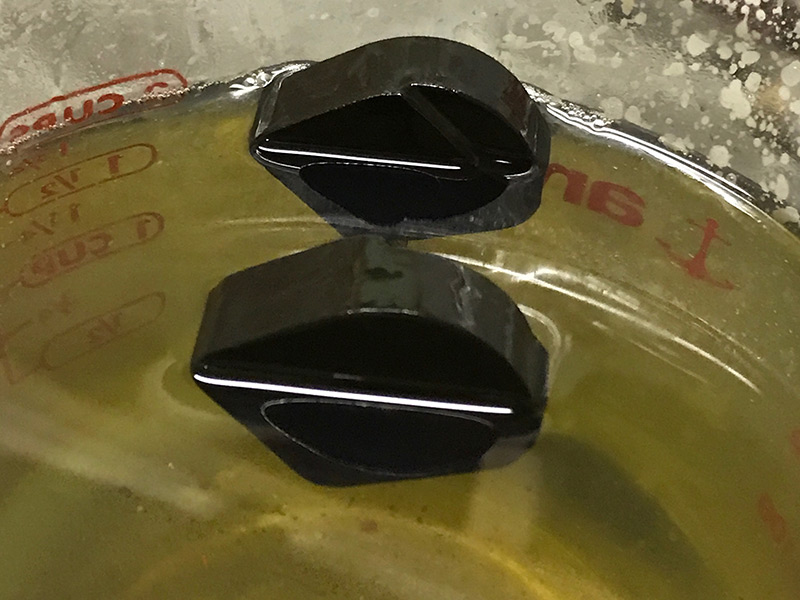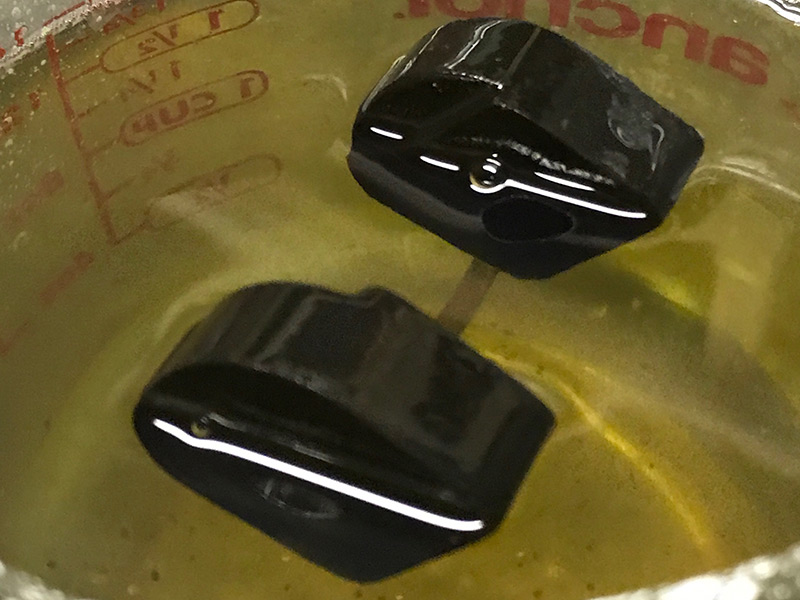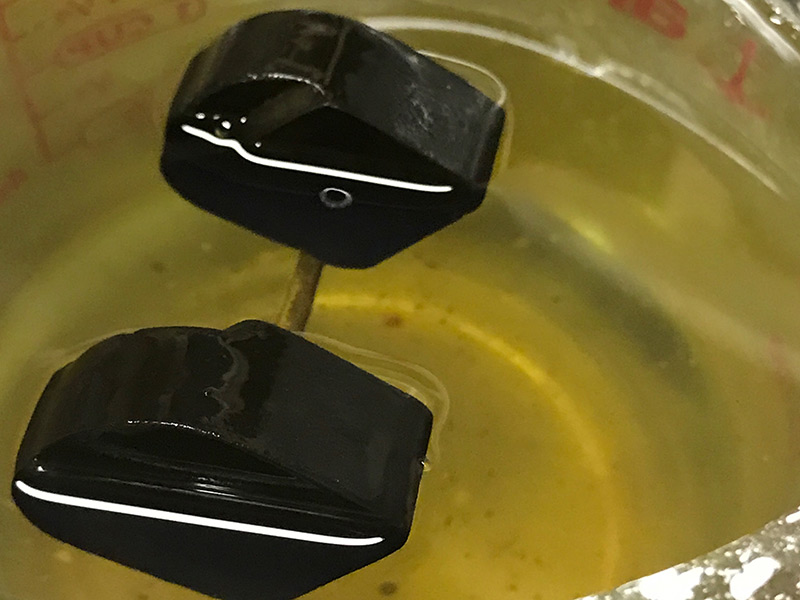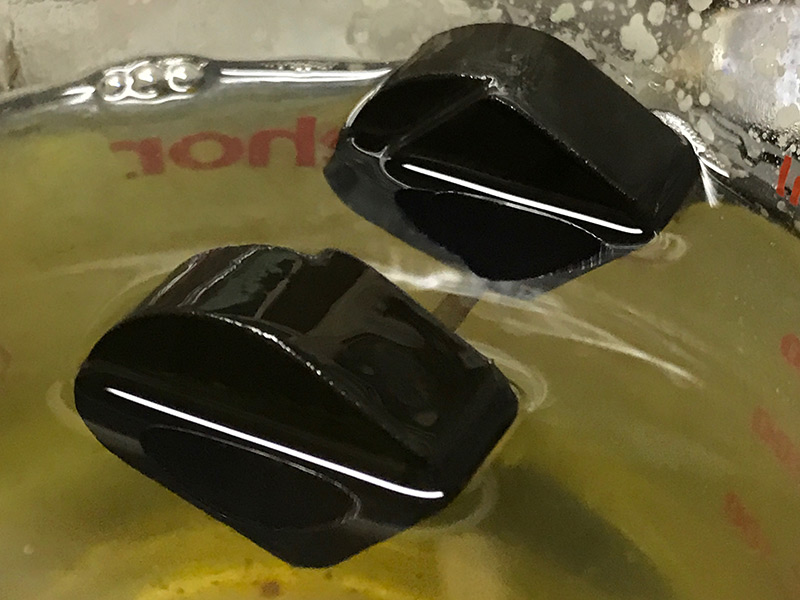The floats look fine. If you saved the factory brass when you rebuilt the carbs, take out the "kit" brass and clean and replace the OEM parts. Put the factory needle and seat assemblies back in, but first take a q-tip with some metal polish on it and spin it (by hand) on the seat to polish it up. You also want to polish the bore that the needle shaft slides into. I have seen this bore be rough enough from fuel deposits to hang the needle despite the needle being very obviously plenty loose in the bore. Do that to the kit seats if you threw out the factory parts, or if there is a noticeable groove in the old needle. (Unlikely unless corrosion is involved as the steel needles are very hard compared to the brass seat). Make sure that the tensioning pin in the needle is working perfectly freely and is properly spring loaded. If they are sticky a bit of massaging with some carb cleaner usually restores them. Generally I would use the OEM parts even if I had to clean the tensioning pins. You can spin the needle's point in the q-tip as well. Examine the brass bridge that connects the floats. Where the needle contacts the adjustment tab, there must be absolutely no wear. I see very obvious markings in your video. If there is any marking, you must sand it absolutely smooth (and it MUST be FLAT) with #600 grit minimum and polish so there is no mark what so ever. That surface must be perfectly flat and smooth. If you have to file it flat do so, and then sand and polish. I actually (what are the chances!) happen to have a set of these carbs (actually from a 400 four I'm pretty sure) sitting here in front of me, and the adjustment tab makes a fairly severe angle with the needle when the floats are properly adjusted so this area is especially important presuming yours are the same. This angle puts a side load on the needle which will rob some of the float pressure and thus the assembly will be more prone to leaking. Ideally, this surface will be perpendicular to the needle when the floats are at the correct height. Also check the pins that the floats pivot on - they can not be bent or scratched and the float must swing absolutely freely. The pin should fall easily through the brass bridge no matter where it is rotated in the bore. And it should slide easily through its mount in the main casting. Check both parts separately without assembling the float into the main casting. With the carb bodies upside down and the fuel bowl sealing surface level, the bottom of the floats should also be level (that's the actual bottom of the floats, like when the when the carbs are right side up.). In other words, the bottom of the floats should be parallel with the gasket surface when gravity is working to close the needle and seat assembly. Make sure the adjustment tab is bent correctly and has no twist - it must be perfectly parallel to the rest of the bridge when viewed from the front (engine side).
The needle and seat/float assembly is simple and reliable, but because the forces to make it work are so very small, it doesn't take much to cause trouble. Any sort of scratch or tiny misalignment can cause it to hang up. For example, the assembled length of the needle and seat, including the thickness of the washer under the seat is critical to be the exact correct length, otherwise the float assembly will be either too high or too low, and compensating with the adjusting tab to get the float height right may make the tab's orientation to the needle to be incorrect and cause the mechanism to work improperly. That is one reason I always keep the OEM parts. If you have to swap them for inferior aftermarket part, it's time to get a micrometer out to see if they are precisely the same.












